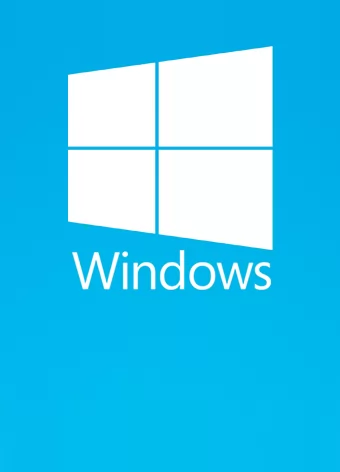
Windows 10: disponibile l'aggiornamento cumulativo di Luglio
Microsoft ha rilasciato oggi il nuovo aggiornamento cumulativo di Luglio per Windows 10, che porta il numero identificato KB4505658 ed include una vasta gamma di correzioni a bug precedentemente segnalati dagli utenti.
Come dicevamo poco sopra, l'aggiornamento corregge una serie di bug, inclusi quelli che causavano l'arresto anomalo di Internet Explorer mentre si provava a trascinare una scheda. E' stato anche risolto un problema che impediva la visualizzazione delle applicazioni appena installate nei risultati di ricerca di Windows 10.
Di seguito il changelog ufficiale:
- Addresses a performance issue that may occur on some websites that use WebAssembly.
- Addresses an issue that may cause Internet Explorer to stop working when you move a tab to create a new window.
- Addresses an issue that may prevent the personal identification number (PIN) prompt from appearing when authenticating in Internet Explorer.
- Updates time zone information for Brazil.
- Addresses an issue that may cause Windows notifications to display nonsense characters instead of a single quote (‘).
- Addresses an issue that prevents newly installed or updated applications from appearing in Windows search results.
- Addresses an issue that prevents the Save and Save As options in Microsoft Office 2010 applications from working when high contrast mode is on.
- Address an issue that prevents SharedPC policies from migrating properly during an upgrade.
- Addresses an issue that prevents a Hardware Support application (HSA) from installing in a timely manner.
- Addresses an issue that prevents the Windows Event Log service from processing notifications that the log is full. This causes issues with some Event Log behaviours such as archiving the log when it reaches a maximum file size and you’ve configured the “Archive the log when full, do not overwrite events” setting. Additionally, the Local Security Authority (LSA) cannot handle CrashOnAuditFail scenarios when the Security Log is full, and events cannot be written.
- Addresses an issue that prevents a system from recognizing a Microsoft account or Azure Active Directory account until the user signs out and signs in again.
- Addresses an issue that may prevent the Netlogon service from establishing a secure channel and reports the error, “0xC000007A – ERROR_PROC_NOT_FOUND.”
- Addresses an issue that may cause authentication to fail when using Windows Hello for Business on a server running Windows Server 2016 with the Server Core option installed.
- Addresses an issue that causes some processes running inside Windows Server containers and Hyper-V containers to have empty names.
- Addresses an issue that causes input and output to fail when Multipath I/O (MPIO) failover occurs.
- Addresses an issue that causes applications that use windows.storage.dll to stop working and displays ExceptionCode c0000005 (Access violation) when the process closes.
- Reinforces the Certificate Revocation List (CRL) on Internet Key Exchange version 2 (IKEv2) machines for certificate-based virtual private network (VPN) connections, such as Device Tunnel, in an Always On VPN deployment.
- Addresses an issue that intermittently prevents connections to a corporate network when using Always On VPN with the IKEv2 protocol. Connections are not always automatically established, and manual connections sometimes fail. In this scenario, when you call the RasDial function from the command line for the target VPN connection, you receive the error, “ERROR_PORT_NOT_AVAILABLE(633)”.
- Addresses an issue that changes the status for Work Folders in File Explorer to 0x80C802A0 (ECS_E_SYNC_UPLOAD_PLACEHOLDER_FAILURE) after selecting Free up space.
- Addresses an issue that may cause a Remote Desktop Server to stop responding when someone who is using drive redirection disconnects.
- Addresses an issue that causes an error when using certain data persistence memory technologies.
- Addresses an issue that prevents Microsoft Application Virtualization (App-V) scripting from working if you run it when you’re not connected to a domain controller (DC). App-V scripting also fails when you run it in an environment that only contains Microsoft Azure Active Directory.
- Addresses an issue that damages the Microsoft Message Queuing (MSMQ) feature and prevents it from starting or installing again. This issue may occur after installing Windows updates or upgrading from Windows 10, versions 1607, 1703, and 1709 to Windows 10, version 1809.
- Addresses an issue with opening or using the Window-Eyes screen reader application that may result in an error and prevent some features from functioning as expected.
- Addresses an issue that may fail to keep App permissions settings when you select Keep my files after selecting Reset this PC.
- Addresses an issue with system reliability in certain scenarios when upgrading from Windows 10, version 1703.
- Addresses an issue with enrolling a device in the Windows enterprise commercial data pipeline.
A seguito dell'installazione dell'aggiornamento, Windows 10 1809 verrà aggiornato alla versione 17763.652.
Per coloro che hanno installato gli aggiornamenti precedenti è prevista l'installazione solo delle ultime correzioni.
FONTE: mspoweruser
Unisciti all'orda: la chat telegramper parlare di videogiochi
Altri contenuti per Windows 10
- Quando verrà abbandonato Windows 10? Svelati i prezzi per mantenerlo sicuro
- Windows 10, Microsoft conferma la fine del supporto per una popolare versione
- Windows 10 va in pensione? Macchè: è il sistema operativo di 2 PC su 3
- Windows 10, l'ultimo aggiornamento non funziona a un mese dall'uscita: che succede?
- 240 milioni di PC da rottamare con la fine del supporto a Windows 10: i dati di Canalys
Windows 10

Contenuti più Letti
- I tre smartphone Xiaomi migliori per fare foto sensazionali: ecco perché

- 1 commentiCome faccio a sapere se nella mia zona c'è la fibra? Le nuove mappe per FTTH ed FWA

- Follia Samsung Galaxy S24 Ultra: coupon Amazon ABBATTE IL PREZZO

- 1 commentiCosa cambia tra Kindle e Kobo? Tutte le principali differenze

- 2 commentiBoston Dynamics sorprende tutti: il nuovo robot Atlas si alza da solo!

- Qual è la città al mondo dove si consuma più vino? Si trova in Italia

- Bimba e padre scoprono il fossile dell'ittiosauro più grande della storia: è record

- Questo frutto sta per diventare un nuovo 'super-cibo'? Vediamo perché

- 1 commentiMolti husky vengono abbandonati per questa tristissima ragione

- Questo nuovo sottomarino potrebbe rivoluzionare la guerra marina


 Windows 10
Windows 10





